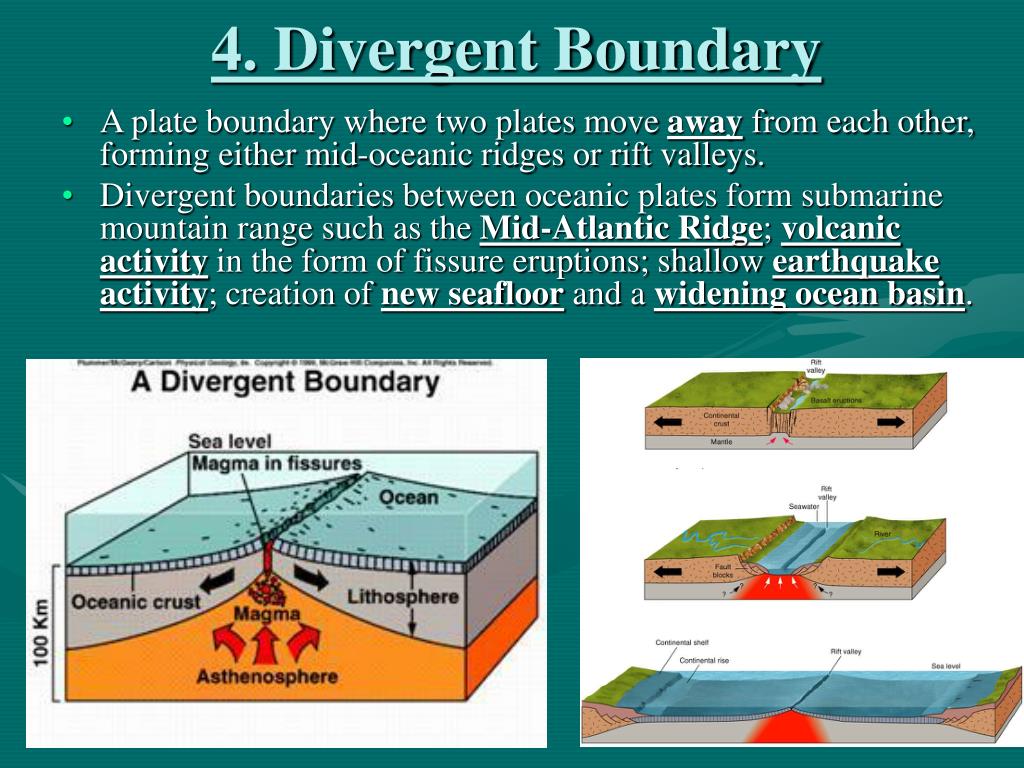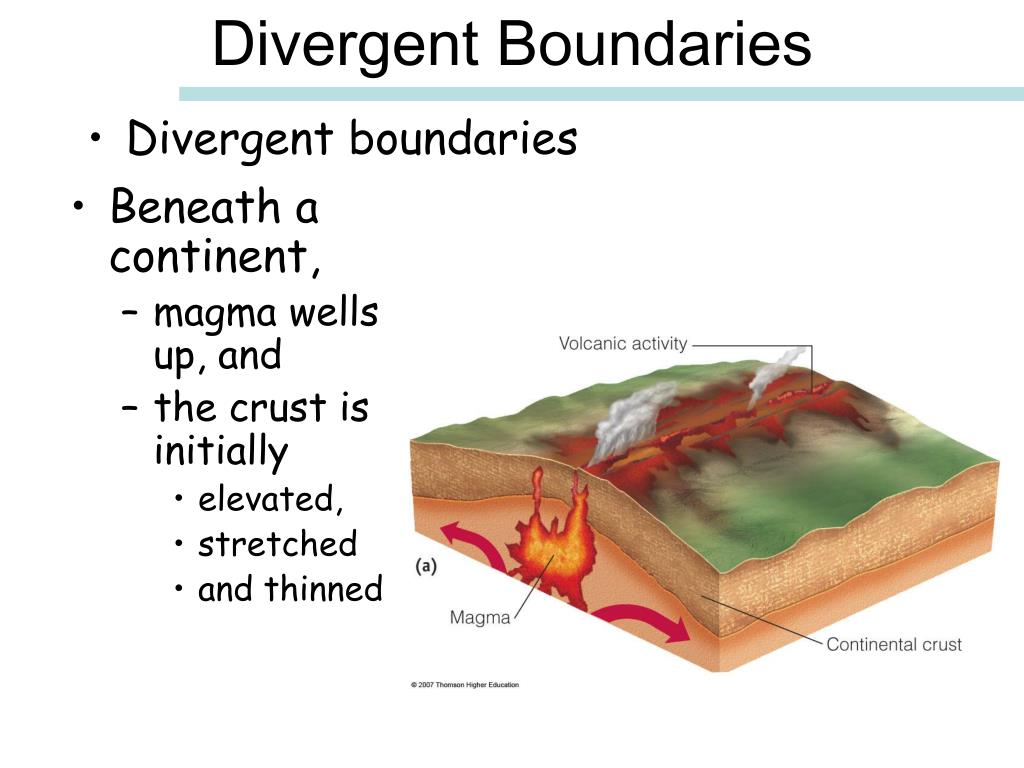
Most of the world's divergent plate boundaries are on the ocean floor, in the form of mid-ocean spreading ridges. (Follow this link to a Basics Table that summarizes plate boundary information, including the map symbol for each type of boundary.)
convergent plate boundaries, where two plates move toward each other and either collide with each other or one plate bends down and goes beneath the other. transform plate boundaries, where two plates move horizontally side-by-side in opposite directions. divergent plate boundaries, where two plates move away from each other. There are three general types of plate boundaries: Most of Oregon and approximately 2/3 of Washington state have come into existence as part of North America during this time. Since the Pacific Northwest became an active plate boundary zone about 200 million years ago, the North American continent has grown considerably in the region. Plate boundary processes also explain how most of the land of Washington and Oregon has come to be part of North America in the last 200 million years. The motion of these plates, and how the plates interact along their boundaries, underlies the major geological themes of the region, including the uplift of the Coast Ranges, the formation of the Puget-Willamette Lowland, and the volcanism of the Cascade Range. The boundaries of several tectonic plates are close to the Pacific Northwest. Much of the action in geology that you read about in the news - devastating earthquakes which in some cases set off giant ocean waves and volcanic eruptions that bury countrysides, divert airplane flights, and cloud the atmosphere with aerosols - occur because tectonic plates interact with each other along their boundaries. In sum, most (though not all) of the earthquakes and volcanic eruptions that take place in the world happen in association with plate boundaries. Voluminous igneous intrusions and frequent volcanic eruptions occur at two of the major types of plate boundaries. Earthquakes, faulting, and folding take place at these boundaries. Plate tectonics also allows us to account for the origins of the oceanic crust and the continents.Īccording to plate tectonic theory, the lithosphere is divided into rigid plates that interact with one another at their boundaries. Now that we realize these plate tectonic connections, we can explain the origins of the volcanic arcs, earthquakes, and exotic terranes. Plate tectonic theory allowed geologists to understand the connections between the world's volcanic arcs and deep earthquake zones exotic terranes and thrust fault zones and transform faults and shallow earthquake zones. To understand plate tectonics, the different ways of classifying the layers of the earth - by composition and by physical behavior - must be kept in mind. The lithosphere consists of the tectonic plates, and the softness and flow of the asthenosphere helps enable and empower the movements of the plates. Although the asthenosphere is solid, it is a "soft" solid, which flows at a geological rate. The most important characteristic of the asthenosphere is that is the weakest layer of the solid mantle. The asthenosphere is between 500 and 650 km (300 and 400 miles) thick. The asthenosphere is the layer beneath the lithosphere. The lithosphere is thickest - up to about 200 km (120 miles) thick - beneath the old interiors of continents. The lithosphere averages about 100 km (60 miles) thick. It is a rigid layer consisting of the tectonic plates. The lithosphere is the outer physical layer of the earth. Of the physically defined layers of the earth, it is the lithosphere and the asthenosphere that are most important for plate tectonics. The earth is also layered in terms of physical behavior - how rigid a layer is, how soft it is. The core consists of a mixture of iron and nickel. The mantle consists of dense, ultramafic rock. Continental crust is thick (25-70 km thick), low in density, and has an intermediate average composition oceanic crust is thin (typically 5-10 km thick), higher in density, and has a mafic average composition. The earth is layered in terms of chemical composition as follows: The foundation for the new way of comprehending earth processes is the understanding that the outer layer of the earth is the lithosphere rather than simply the crust. By 1970, college geology majors were taught a set of ideas unheard of by most geology students prior to 1960. The theory of plate tectonics revolutionized geology in the 1960s. Deep Earthquakes (Subduction Earthquakes). 
Ocean-Continent Convergent Plate Boundaries.

Ocean-Ocean Convergent Plate Boundaries.Continent-Continent Convergent Plate Boundaries.What are the different types of plate boundaries?.






 0 kommentar(er)
0 kommentar(er)
